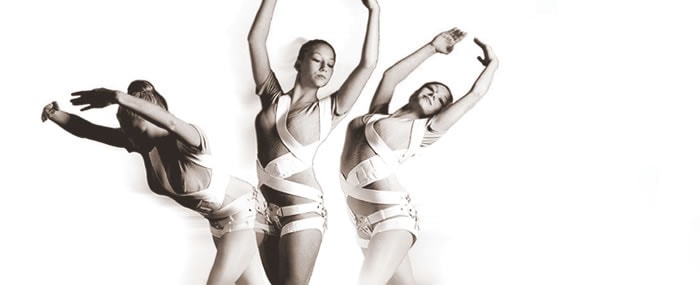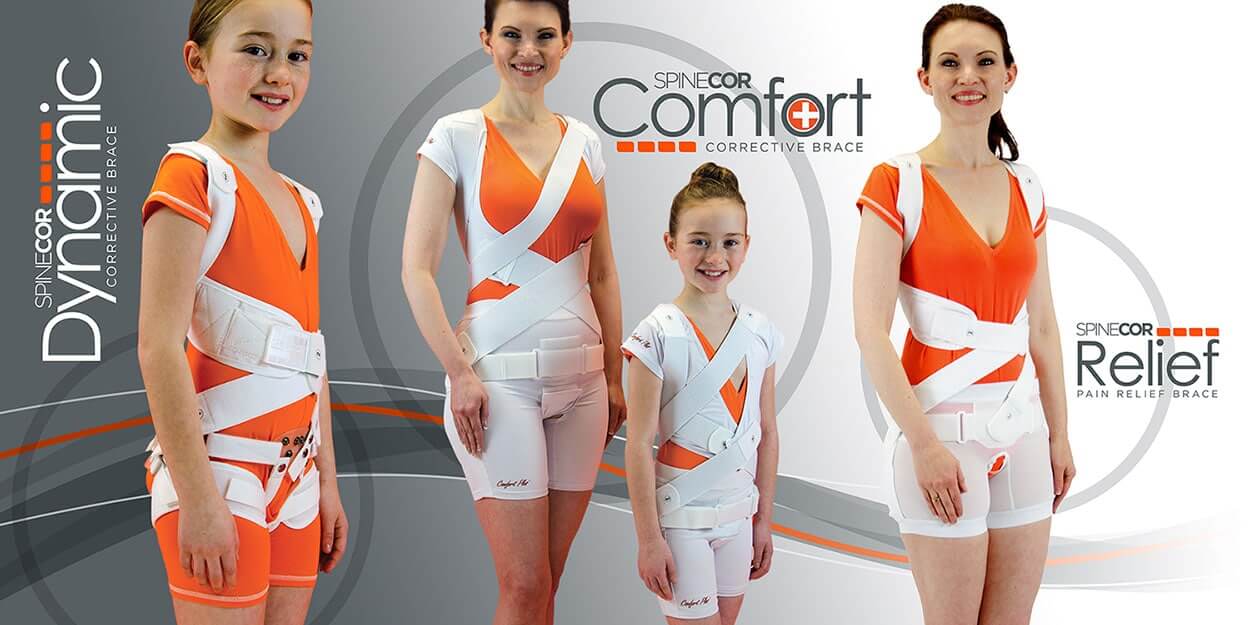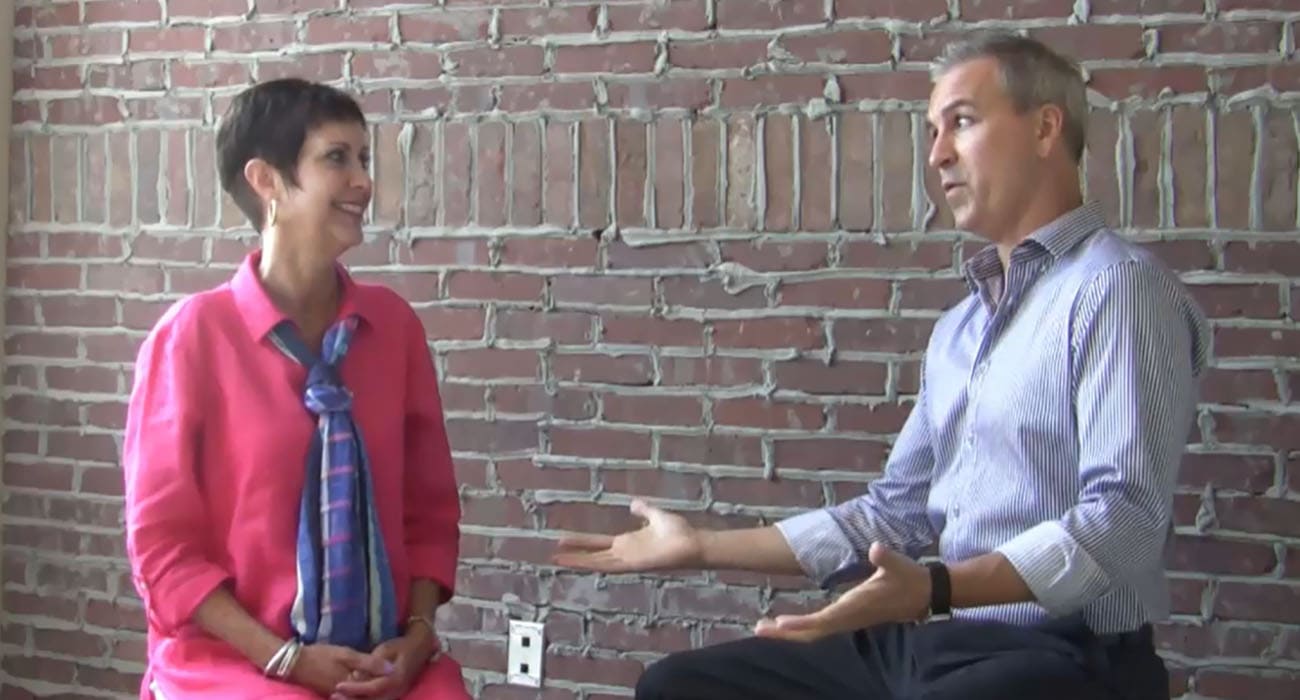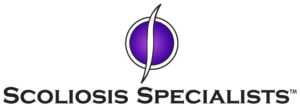Learn About The SpineCor Brace

Tens of thousands of patients succeed with SpineCor, correcting or stabilizing the disorder.
SpineCor® Scoliosis Brace was developed in the early 1990s after rigorous research and clinical trials by a team of 65 researchers based at Sainte-Justine Hospital in Montreal, Canada. Although originally used as a brace for scoliosis for children with Adolescent Idiopathic Scoliosis (AIS), it became clear that the SpineCor brace greatly reduced related pain in adults, as well. Today, Scoliosis Specialists doctors see an even mix of pediatric scoliosis and adult scoliosis patients.
SpineCor treatment differs from conventional rigid or semi-rigid braces for scoliosis, which restrict motion, causing muscle atrophy. SpineCor inhibits the progression of spinal deformity. Furthermore, it allows full range of motion while balancing and strengthening musculature, improving posture and reinforcing and integrating neurological feedback. See how SpineCor scoliosis treatment compares to other methods.
Call For A Free Consultation By A Scoliosis Doctor
Find out if you or your loved one is a candidate for the SpineCor Scoliosis Brace. Call us at the toll-free number, above, or submit the contact form in the right-hand column. One of our doctors will conduct a FREE phone consultation to determine if SpineCor is the right solution. We work with the patient’s chiropractor, surgeon, or other healthcare providers to assure proper care. Also, if your insurance plan covers out of network services, you could get a significant portion of the SpineCor Brace cost reimbursed – get more insurance info.
Learn more about the criteria for bracing Adolescent Idiopathic Scoliosis using SpineCor. Click the link for information about adult scoliosis. On the first visit, the doctor will explain how the brace works, bracing protocols and follow up exams.

The SpineCor Corrective Pediatric Brace helps children ages 5 to 16. The most common age group is adolescents ages 12-16. SpineCor effectively treats idiopathic scoliosis.
SpineCor is effective in treating Cobb angles between 15 to 50 degrees in all classifications of adolescent idiopathic scoliosis.
The SpineCor scoliosis brace is most effective when bracing starts before the 1st growth spurt, in what is called Risser 0. However, the SpineCor scoliosis brace has been shown to be effective in more advanced years of maturity, Risser Signs 1-3, as well.
Compliant patients get better results. Teenagers not committed to wearing the brace jeopardize potential treatment success. For most patients, the SpineCor brace is the most comfortable, wearable, efficient and successful brace available. Therefore, the acceptance rate is high.
The SpineCor concept is unique in the fact that the results are achieved not so much by the brace but by the interaction of the brace with the patients Corrective Movement. Researchers at the St. Justine Children’s hospital in Montreal Canada developed corrective movements for all types of idiopathic scoliosis to “open up” or correct the curves.
The patient is then braced in that corrective movement and held there 20 hours per day by the elastic bands that make up the scoliosis brace. Elastic bands provide the efficacious action in the brace. As the patient goes through the movements of the day, they stretch the elastic bands and the bands then resist and pull them back into the corrective movement. This stimulates the growth centers in the deformed vertebra and it stimulates the neuromuscular system. Over time, the gentle resistance of the brace and the reprogramming of the bodies neuromuscular pattern stabilizes and corrects the scoliosis in 89% of patients. Get these phenomenal results!
In order to bring about the desired results the SpineCor brace must be worn 20 out of 24 hours per day. This is less than rigid braces. Patients get two (2) hour breaks per day, one in the morning and one in the evening. SpineCor research has determined that the minimum time period for bracing is 18 months, but most cases will average 24 months. It depends on the amount of skeletal maturity when the patient is ready to wean from the brace. Below is the progression of follow up visits after the initial visit, and what occurs on each of those visits.
On your first visit to our office, we perform three types of exams. It is necessary for the patient to wear form fitting clothing. Girls should wear tighter shorts and a jog bra and boys should wear shorts like bicycle shorts. Loose clothing will hinder our postural and clinical exams.
I. Clinical exam: This is where we will assess the contours of the spine using a scoliometer, which is a device to determine the inclination at certain segments of the spine.
II. Postural exam: During this exam we will assess the shifts, rotations and contours of the patients posture using a visual inspection and a laser inspection. Certain types of scoliosis create certain postural deformities, which assist in the classification of the scoliosis.
III. X-ray exam: We will take 3 x-ray views during this exam. They are a back to front standing X-ray of the full spine, a standing side view of the entire spine and a laying front to back view of the full spine. These three views combined allow us to get a very good idea of the classification of scoliosis. The back to front standing view allows us to measure the curves using the Cobb analysis. From the side view, we see if the normal curves are too flat, too curved or normal. Finally, the laying view allows us to determine the flexibility of the curve, which helps in determining the prognosis for correction or stabilization.
Once all of these exams are completed, doctors enter all the data into what is called the Scoliosis Assistant Software, which helps us in the classification of the scoliosis and the chances of reducing the curves. Once we complete these exams we should know if the patient is a good candidate for the SpineCor brace or not. If a patient is a good candidate then we will schedule a date the following week to return to fit the brace. If a patient is not a good candidate then they will be referred to the proper provider for further consultation.
We explain the costs of the brace and potential for insurance reimbursement at the initial consultation.
Brace fitting day is a big day. Bring the whole family and even closest friends of the patient. The support group provide moral support and can assist the patient in wearing the brace. Introduce SpineCor
First of all we will introduce the patient to their scoliosis brace and show them all the components. For girls there will be a body suit provided by SpineCor. Patients wear the body suit under the brace to keep the components from rubbing. Boys should look at getting undershirts and underwear to wear under their brace.
Before we begin fitting, we instruct the patient and their family on the corrective movement. This is the series of movements that the patient performs to correct their scoliosis. Each time the brace is put on the patient performs corrective movement, so it is essential that everyone is familiar with that movement. Once we have mastered the corrective movement then we will begin fitting.
In order to ensure maximum patient improvement, Scoliosis Specialists follows a proven, pre-defined follow-up process. Our scoliosis doctors schedule these appointments, starting between 4-12 weeks following initial scoliosis bracing with SpineCor. Here is an overview of the follow-up visits: Visit#2 (1 month following initial brace fitting)
First of all, we analyze SpineCor Brace Setup; Pre-adjustment clinical measurements taken; without brace clinical exam performed; brace adjusted based on the brace provider’s evaluation; post-adjustment clinical measures taken.
Visit#3 (3 months following initial brace fitting)
Review the SpineCor Brace Setup; Pre-adjustment clinical measurements taken; without brace clinical exam performed; brace adjusted based on the brace provider’s evaluation; post-adjustment clinical measures taken; After brace adjustment, we take a PA x-ray in brace, and with a shoe lift if prescribed, it should show a reduction or stabilization of the original Cobb angles.
Talk To A Specialist Today

